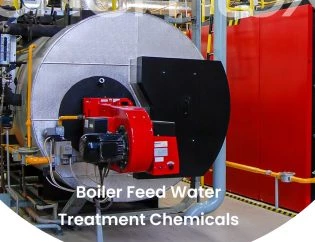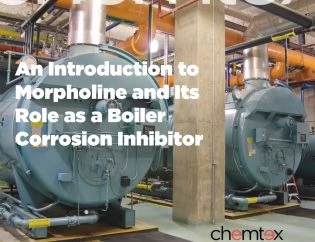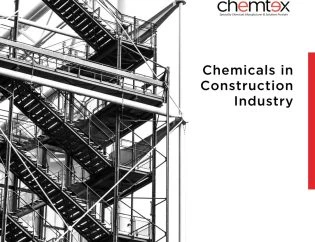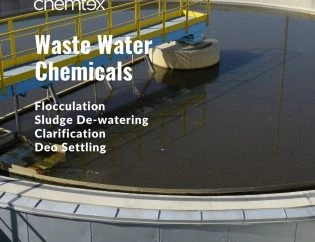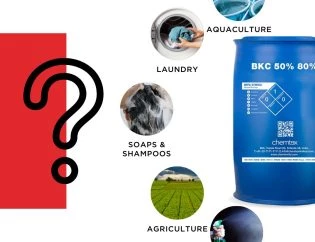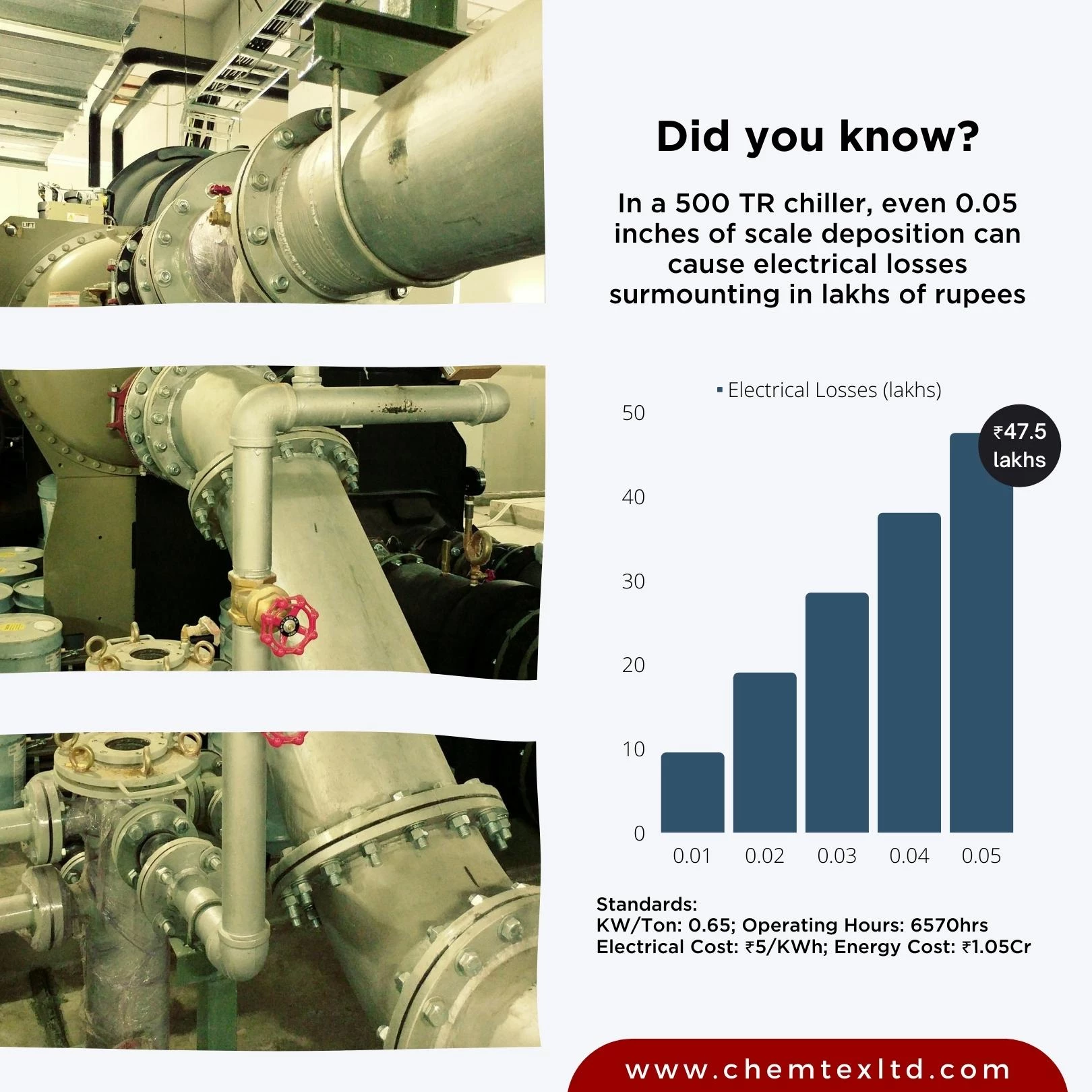
Chiller water treatment chemicals
For water cooling systems to run smoothly, efficient heat removal is essential. The principal function of chillers is to remove heat from water through the refrigeration cycle, with the water then re-circulated through a heat exchanger to cooling equipment, making water the most integral part of the system. Water works as an excellent medium for transferring heat in cooling towers due to its ability to dissolve and capability to retain high concentrations of minerals and deposits.
Chemical treatment forms the most widely used method, in conjunction with mechanical treatment for optimal use of chiller systems. The dissolved contaminants in the water result in scaling, bio-fouling, even corrosion, needing proper maintenance to avoid plant shutdowns and extend machine life.
Cleaning of new systems is just as important as cleaning the old ones since the metal surfaces would be covered with oil, grime, welding dust which drastically reduce heat transferring efficiency.

Three major problems associated with chiller systems:
- Scaling occurs when the concentration of dissolved salts exceeds their solubility limits and accumulate on surfaces that are in contact with the water. The most common scale formers, calcium salts, exhibit reverse solubility in that they become less soluble as the temperature of the water increases. This property causes scale formation in the most sensitive area — the heat transfer surfaces of production equipment.
- Corrosion – Oxygen pitting is the most common form of corrosion, symptoms showing rusty water or recurring maintenance on corroded bearings against the seal surfaces.
- Fouling – Pathogens allowed to propagate inside the system, can create a “living” deposit or bio-film. Their respiratory by-products are often acidic, and O2 consuming, leading to microbial induced corrosion (MIC).
Chemical treatment for chiller water system prevent chiller systems from corrosion, scaling, bio-fouling. How? Mainly in three ways: first, these chemicals react with the pipes to form a protective film; second, the chemicals help in maintaining the pH level; and third, the chemicals remove corrosive dissolved oxygen in the water.
Chiller system maintenance involve proper system cleaning with de-rusting and passivation of exposed metallic surfaces. The most common chemical treatment is to provide a defensive chemical layer to prevent biological fouling and sludge, scale deposits in the pipeline, tubes, water passages, etc. These chemicals also help in maintaining the pH level and remove corrosive dissolved oxygen from the water. This method is effective for preventing microbial growth inside the systems.
Recent Posts
- The Impact of Descaling Chemicals on Industrial Operations: A Detailed Analysis
- How speciality chemicals play an important role in CIP process of Breweries & Microbreweries?
- Propylene glycol has many uses beyond just being an antifreeze. Discover some of them here!
- Chemicals for Boiler Feed Water
- Acid Inhibitor Chemicals for Mineral Acid Corrosion
- Engine Coolant Antifreeze Liquid
- Sulfamic Acid Descalant – How it Works, Where to Get
- Citric Acid Manufacturing Companies in India
- Why You Should Use Morpholine for Your Boilers
- 6 Types of Construction Chemicals to ensure the right cement mix
Categories
- Cleaning & Disinfectant Chemicals (13)
- Energy Chemicals (3)
- Heat Transfer Fluids (3)
- Mostbet (1)
- Performance Chemicals (8)
- Uncategorized (4)
- Water Treatment Chemicals (6)

